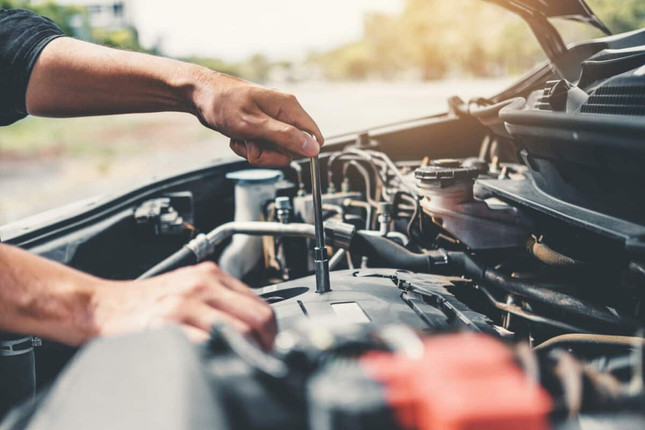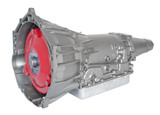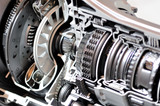Daily Auto Transmission Care for Smooth and Reliable Performance
Your vehicle's automatic transmission plays a crucial role in ensuring a smooth and hassle-free driving experience. Taking care of your car's transmission on a daily basis can significantly extend its lifespan and prevent costly repairs. In this comprehensive guide, we will explore the importance of daily auto transmission care and provide practical tips to keep your transmission in optimal condition.
I. Understanding the Automatic Transmission System:
Before delving into maintenance tips, it's essential to have a basic understanding of how an automatic transmission works. Unlike manual transmissions, automatic transmissions use a torque converter to manage the flow of power from the engine to the wheels. This complex system relies on various components, including gears, clutches, and fluid, to function seamlessly.
- Regular Transmission Fluid Checks:
One of the most critical aspects of daily transmission care is monitoring the transmission fluid. Transmission fluid serves multiple purposes, including lubricating moving parts, cooling the transmission, and transmitting power. Over time, transmission fluid can become contaminated or deteriorate, leading to a decline in performance and potential damage.
Tip 1: Check Transmission Fluid Levels
Regularly check your transmission fluid levels to ensure they are within the recommended range. Low fluid levels can lead to overheating and increased friction, causing premature wear on transmission components.
Tip 2: Inspect the Color and Consistency
Transmission fluid should be translucent and have a reddish hue. If you notice a dark or burnt smell, it may indicate that the fluid needs to be changed. Consult your vehicle's manual for the recommended fluid change intervals.
III. Regular Transmission Fluid Changes:
Changing the transmission fluid at the manufacturer-recommended intervals is crucial for maintaining optimal performance. Over time, transmission fluid breaks down, losing its ability to lubricate and cool the transmission effectively.
Tip 3: Follow Manufacturer Guidelines
Refer to your vehicle's owner's manual for specific recommendations regarding transmission fluid change intervals. Some manufacturers suggest changing the fluid every 30,000 to 60,000 miles, but this can vary depending on the make and model of your vehicle.
Tip 4: Use the Right Transmission Fluid
When changing the transmission fluid, always use the type recommended by the vehicle manufacturer. Using the wrong fluid can lead to poor performance and potential damage to the transmission.
- Warm-Up Your Vehicle Before Driving:
Allowing your vehicle to warm up before hitting the road is not just beneficial for the engine but also for the transmission. Cold temperatures can cause the transmission fluid to thicken, reducing its effectiveness.
Tip 5: Idle for a Few Minutes
During colder weather, let your vehicle idle for a few minutes before driving. This allows the transmission fluid to warm up and flow smoothly, ensuring optimal performance.
V. Gentle Driving Habits:
Your driving habits have a direct impact on the health of your automatic transmission. Adopting a few gentle driving practices can go a long way in preventing unnecessary stress on the transmission system.
Tip 6: Avoid Quick Starts and Stops
Abrupt acceleration and sudden stops can place undue stress on the transmission components. Practice smooth and gradual starts and stops to minimize wear and tear on the transmission.
Tip 7: Use the Parking Brake
When parked on an incline, engage the parking brake before shifting into "Park." This prevents the entire vehicle weight from resting on the transmission's parking pawl, reducing stress on the transmission.
- Regularly Inspect for Leaks:
Transmission fluid leaks can lead to a variety of issues, from poor performance to complete transmission failure. Regularly inspecting your vehicle for leaks is a crucial part of daily transmission care.
Tip 8: Check for Reddish Fluid Puddles
If you notice reddish fluid puddles beneath your vehicle, it could be a sign of a transmission fluid leak. Addressing leaks promptly can prevent further damage and ensure the longevity of your transmission.
Tip 9: Keep the Transmission Cooler Clean
Regularly inspect the transmission cooler for debris, dirt, and other contaminants that can impede its efficiency. Use a soft brush or compressed air to clean the fins of the cooler, ensuring optimal heat dissipation. Overheating can lead to accelerated wear on transmission components, making cooler maintenance an integral part of daily transmission care.
- Utilize Engine Braking:
While automatic transmissions are designed to handle the demands of everyday driving, utilizing engine braking can reduce the strain on the transmission during downhill descents. Engine braking involves downshifting to a lower gear, allowing the engine to slow the vehicle down without relying solely on the brakes.
Tip 10: Downshift on Downgrades
When descending steep grades, manually downshift to a lower gear to engage engine braking. This helps distribute the load more evenly across the transmission and prevents excessive wear on the brakes, contributing to the overall health of the transmission.
- Address Transmission Issues Promptly:
Ignoring warning signs and symptoms of transmission problems can lead to more extensive damage and costly repairs. Being proactive in addressing potential issues is a key aspect of daily transmission care.
Tip 11: Attend to Unusual Noises
Unusual noises such as whining, clunking, or grinding could indicate transmission issues. If you notice any unfamiliar sounds, it's advisable to have your vehicle inspected by a qualified mechanic promptly. Catching and resolving problems early can prevent further damage and extend the life of your transmission.
- Optimal Tire Maintenance:
Believe it or not, the condition of your tires can impact the stress on your transmission. Maintaining proper tire pressure and ensuring that your tires are in good condition can contribute to smoother overall vehicle operation.
Tip 12: Check Tire Pressure Regularly
Underinflated tires can create additional drag on the vehicle, requiring the transmission to work harder. Regularly check and maintain the recommended tire pressure to reduce unnecessary strain on the transmission and improve fuel efficiency.
Tip 13: Rotate Tires
Regular tire rotation ensures even wear and tear on all four tires. Uneven tire wear can affect the transmission's load distribution, potentially leading to premature wear on specific components. Follow your vehicle manufacturer's recommendations for tire rotation intervals.
XII. Professional Transmission Service:
While many daily maintenance tasks can be performed by vehicle owners, periodic professional transmission service is essential for comprehensive inspection and maintenance.
Tip 14: Schedule Regular Transmission Service
Consider scheduling a professional transmission service, which typically includes a thorough inspection, fluid change, and adjustment of components. A certified technician can identify potential issues before they escalate, ensuring the continued reliability of your transmission.
XIII. Stay Informed and Educated:
Staying informed about your vehicle's specific transmission requirements and any manufacturer recommendations is vital for effective daily transmission care.
Tip 15: Read the Owner's Manual
Your vehicle's owner's manual is a valuable resource for understanding its specific transmission care requirements. Refer to the manual for information on recommended fluid types, change intervals, and other essential maintenance guidelines.
XIV. Invest in Quality Transmission Additives:
Certain transmission additives are formulated to enhance the performance and longevity of your transmission.
Tip 16: Consider Transmission Additives
Explore reputable transmission additives designed to clean, protect, and condition the transmission system. Adding these products during fluid changes can contribute to smoother shifts and improved overall transmission performance.
Conclusion:
In conclusion, adopting a holistic approach to daily auto transmission care involves a combination of routine maintenance tasks, careful driving habits, and periodic professional inspections. Regularly checking and maintaining transmission fluid levels, addressing leaks promptly, adopting gentle driving practices, and incorporating additional tips such as engine braking and tire maintenance contribute to the overall health and longevity of your automatic transmission.
By integrating these practices into your daily routine, you not only ensure a smoother driving experience but also minimize the risk of unexpected transmission issues and expensive repairs. Remember, a well-maintained transmission is a key component in the longevity and reliability of your vehicle. Stay proactive, stay informed, and enjoy the benefits of a well-cared-for automatic transmission.




